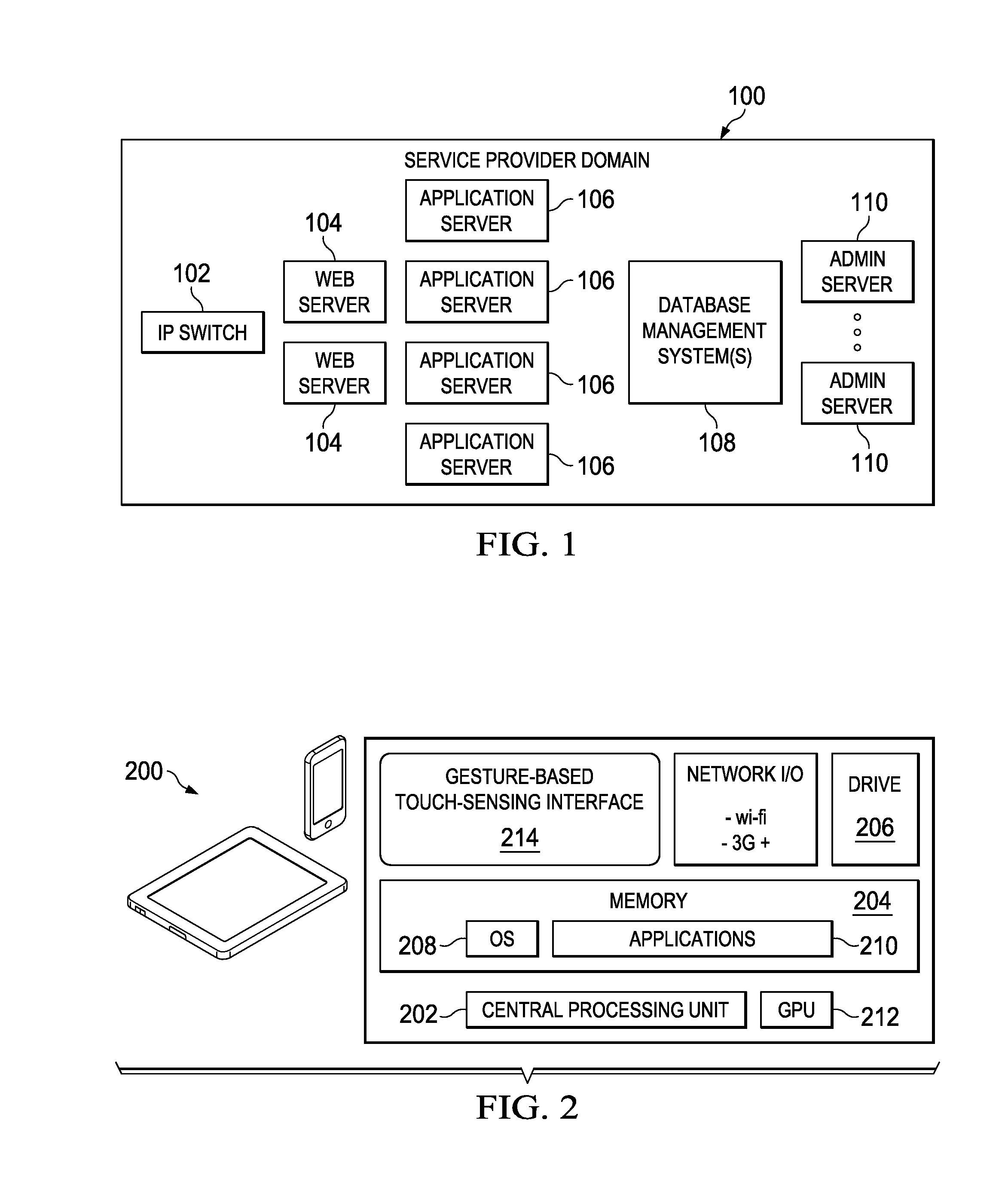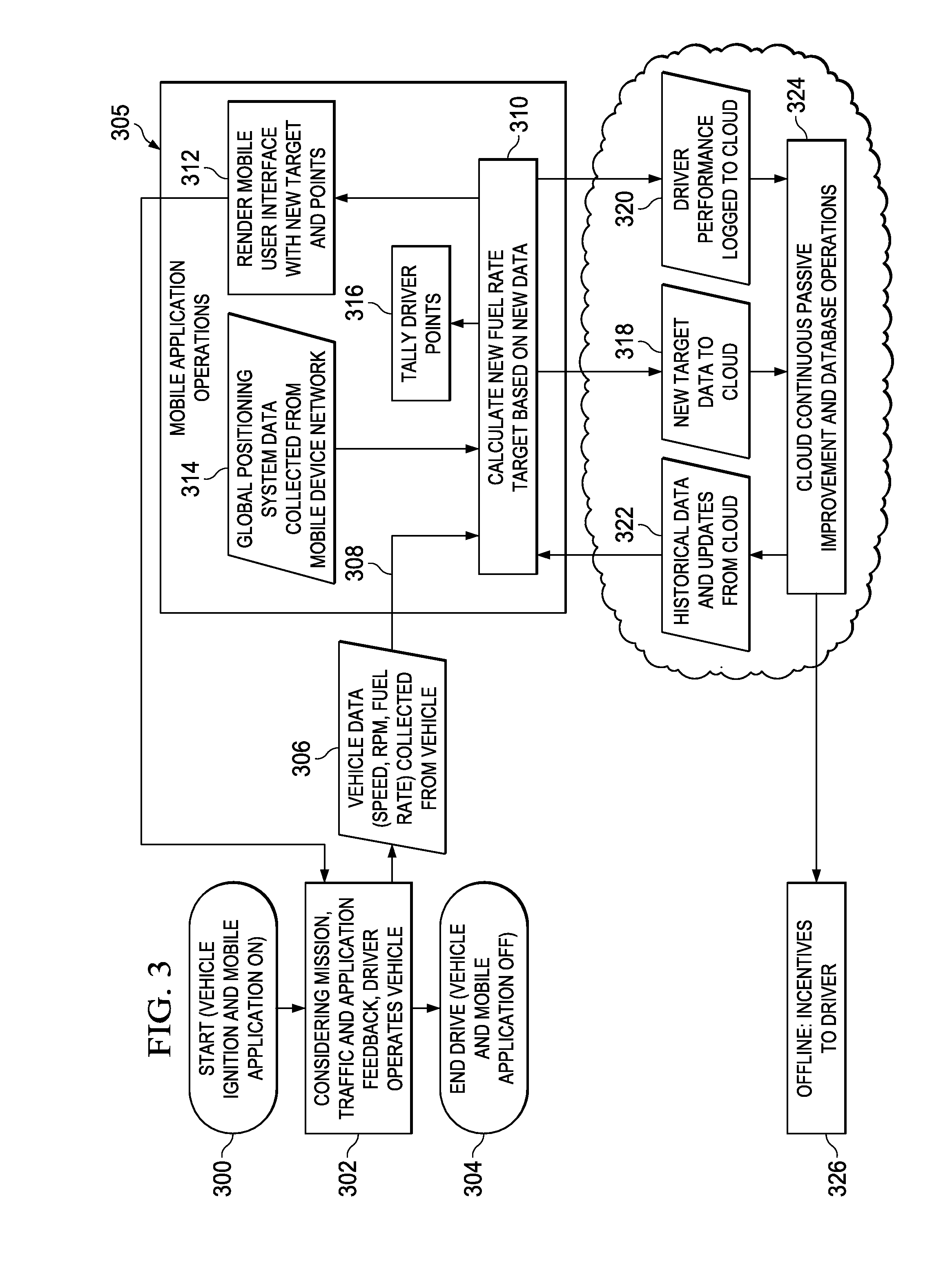Driver measurement and incentive system for improving fuel-efficiency
a technology of fuel-efficiency and incentive system, which is applied in the direction of instruments, navigation instruments, analogue processes for specific applications, etc., can solve the problems of increasing the cost of running a vehicle, increasing the challenge, and increasing the cost of solutions, so as to increase the overall fuel-efficiency
- Summary
- Abstract
- Description
- Claims
- Application Information
AI Technical Summary
Benefits of technology
Problems solved by technology
Method used
Image
Examples
Embodiment Construction
[0021]The disclosed method may be practiced in association with a computing infrastructure comprising one or more data processing machines.
[0022]A representative computing infrastructure provides a driver measurement and incentive service for improving fuel-efficiency. A representative service of this type is PedalCoach™ provided by LinkeDrive of Boston, Mass. This type of service (in whole or in part) may be implemented on or in association with a service provider infrastructure 100 such as seen in FIG. 1. A representative infrastructure of this type comprises an IP switch 102, a set of one or more web server machines 104, a set of one more application server machines 106, a database management system 108, and a set of one or more administration server machines 110. Without meant to be limiting, a representative technology platform that implements the service comprises machines, systems, sub-systems, applications, databases, interfaces and other computing and telecommunications res...
PUM
 Login to View More
Login to View More Abstract
Description
Claims
Application Information
 Login to View More
Login to View More - Generate Ideas
- Intellectual Property
- Life Sciences
- Materials
- Tech Scout
- Unparalleled Data Quality
- Higher Quality Content
- 60% Fewer Hallucinations
Browse by: Latest US Patents, China's latest patents, Technical Efficacy Thesaurus, Application Domain, Technology Topic, Popular Technical Reports.
© 2025 PatSnap. All rights reserved.Legal|Privacy policy|Modern Slavery Act Transparency Statement|Sitemap|About US| Contact US: help@patsnap.com



